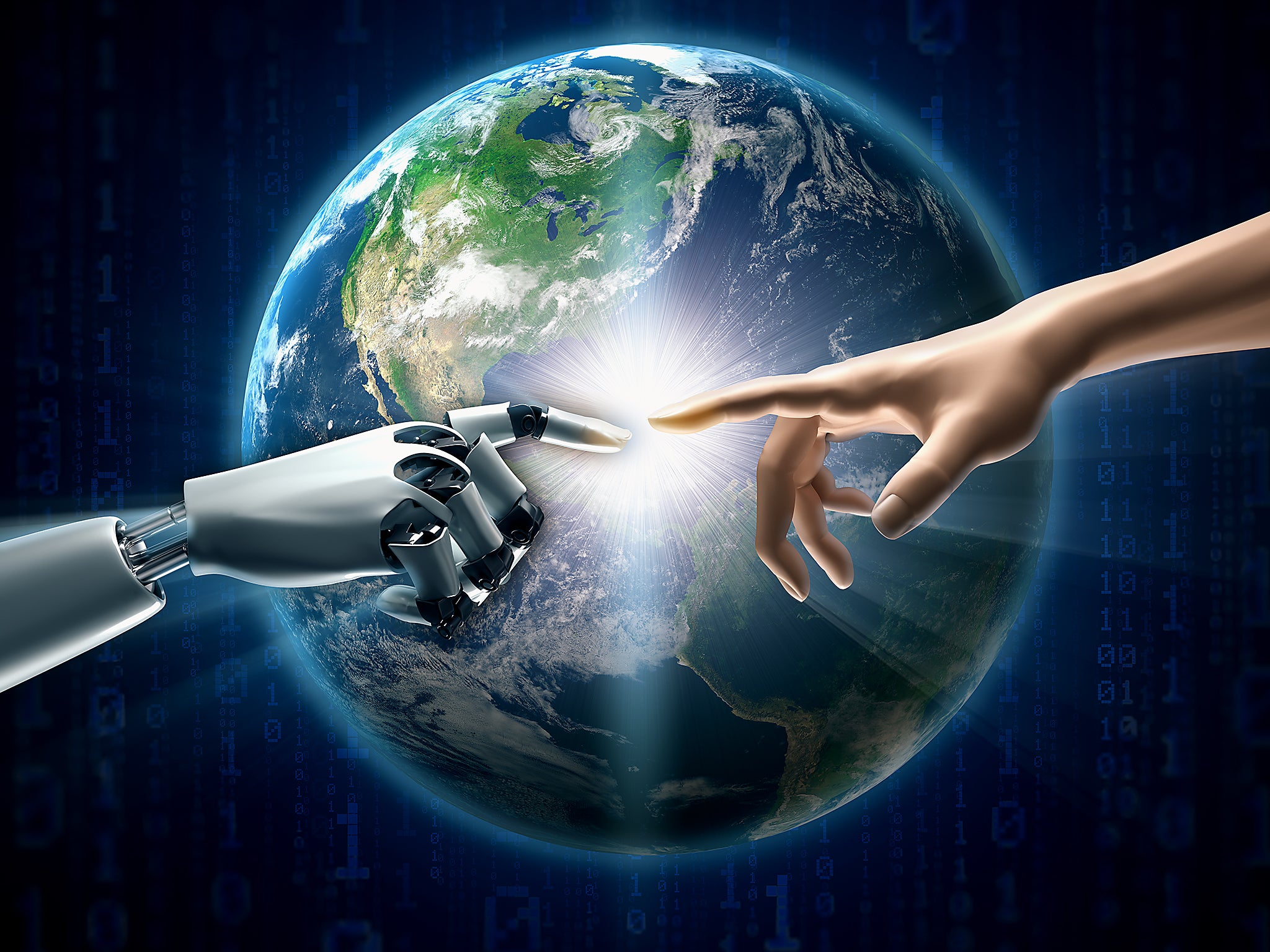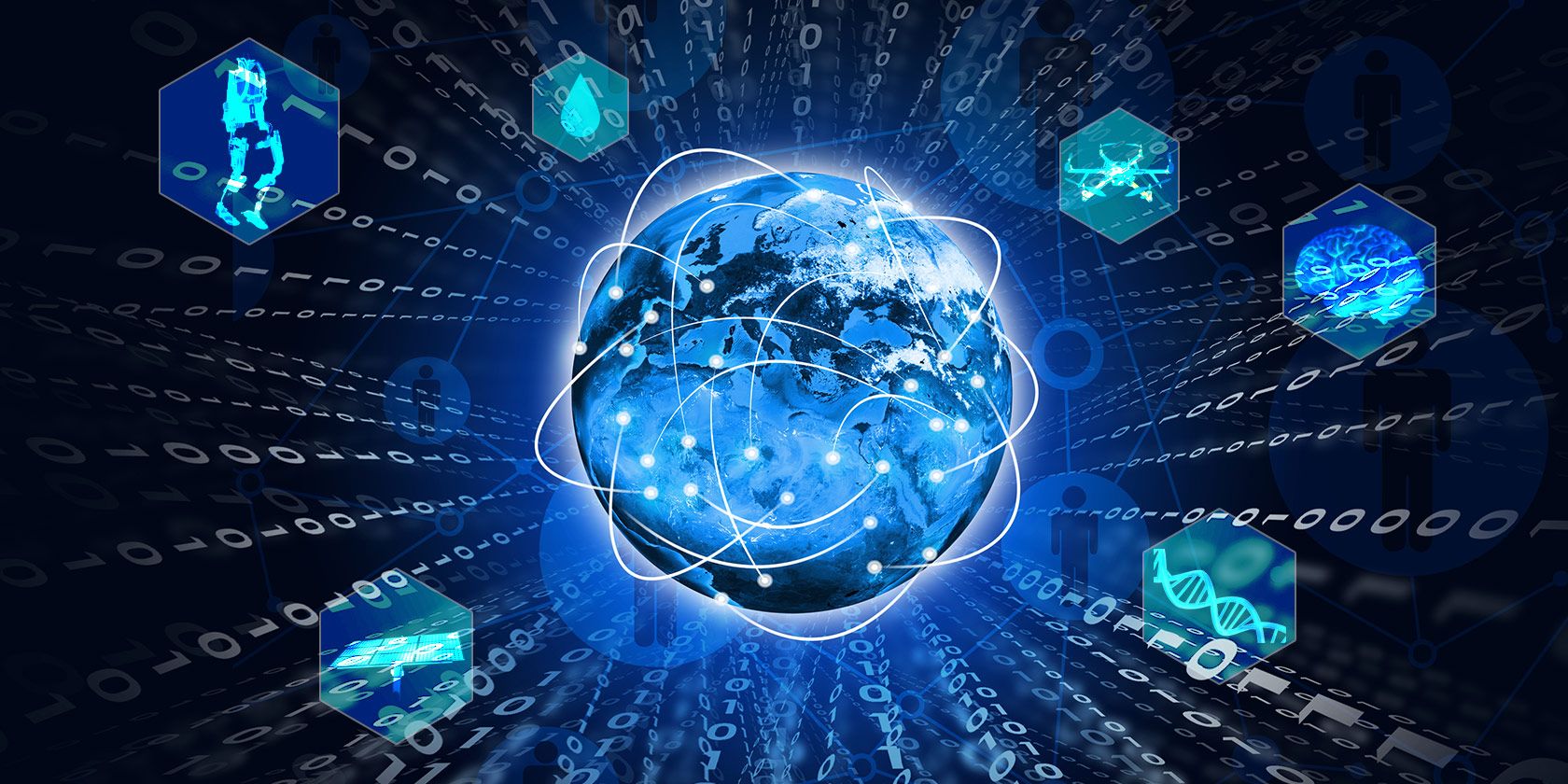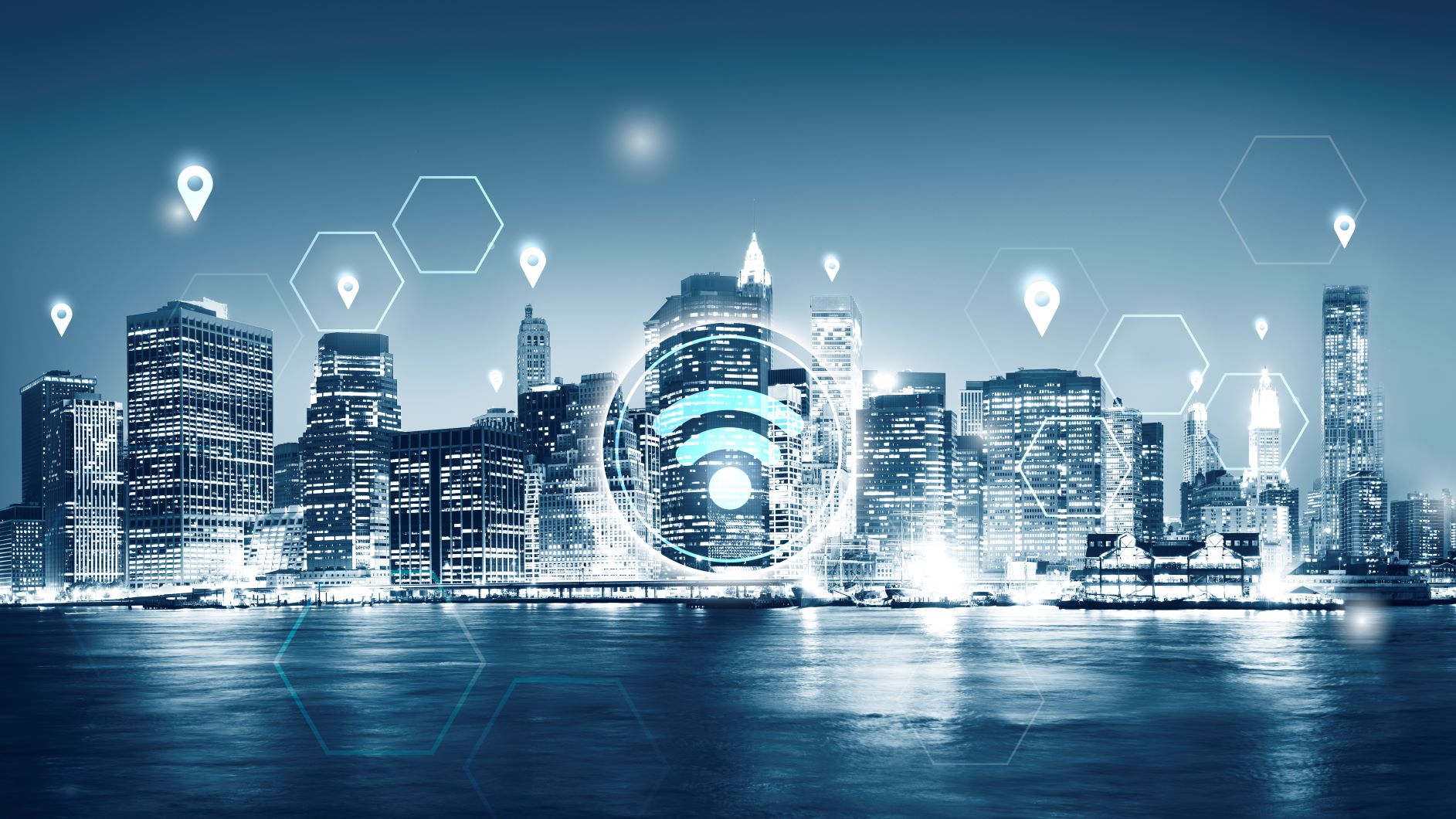Future technology holds immense promise for transforming our lives, industries, and the world as we know it. From artificial intelligence to biotechnology, quantum computing to renewable energy, the future of technology is brimming with groundbreaking innovations that are pushing the boundaries of human ingenuity.
As we delve into the realm of future technology, we will explore the latest advancements in AI, VR, AR, robotics, biotechnology, quantum computing, renewable energy, and space exploration. We will uncover the transformative potential of these technologies, their impact on society, and the ethical considerations that accompany their development and use.
Artificial Intelligence (AI)

AI is a branch of computer science that seeks to understand and create intelligent agents, which are systems that can reason, learn, and act autonomously. In recent years, there have been significant advancements in AI technology, driven by the availability of big data, powerful computing resources, and new algorithms.
One of the most important developments in AI is the rise of deep learning, a type of machine learning that uses artificial neural networks to learn from data. Deep learning has led to breakthroughs in areas such as image recognition, natural language processing, and speech recognition.
Applications of AI
AI is already being used in a wide variety of industries, including:
- Healthcare: AI is being used to develop new drugs, diagnose diseases, and provide personalized treatment plans.
- Finance: AI is being used to detect fraud, manage risk, and make investment decisions.
- Retail: AI is being used to personalize marketing campaigns, recommend products, and improve customer service.
- Transportation: AI is being used to develop self-driving cars, optimize traffic flow, and improve safety.
Impact of AI on Society
The potential impact of AI on society is profound. AI could lead to new technologies that solve some of the world’s most pressing problems, such as climate change, poverty, and disease. However, AI also raises concerns about job displacement, privacy, and the potential for autonomous weapons.
It is important to consider the ethical implications of AI and to develop policies that ensure that AI is used for good.
Virtual Reality (VR) and Augmented Reality (AR)
Virtual reality (VR) and augmented reality (AR) are two of the most promising new technologies in the world. VR creates a simulated environment that can be explored by the user, while AR overlays digital information onto the real world. Both technologies have the potential to revolutionize a wide range of industries, from gaming and entertainment to healthcare and education.
VR/AR Applications
VR and AR are already being used in a variety of applications, including:
- Gaming:VR and AR can create immersive gaming experiences that allow players to feel like they are actually inside the game.
- Healthcare:VR and AR can be used for medical training, surgery planning, and patient rehabilitation.
- Education:VR and AR can be used to create interactive learning experiences that allow students to explore new worlds and concepts.
Potential Uses and Limitations
The potential uses of VR and AR are endless. However, there are also some limitations to these technologies. Potential Uses:
- VR and AR can be used to create new forms of entertainment and education.
- VR and AR can be used to improve communication and collaboration.
- VR and AR can be used to create new ways to interact with the world around us.
Limitations:
- VR and AR can be expensive to develop and use.
- VR and AR can cause nausea and other side effects in some users.
- VR and AR require specialized hardware and software.
Overall, VR and AR are two of the most promising new technologies in the world. They have the potential to revolutionize a wide range of industries, but there are also some limitations to these technologies. As these technologies continue to develop, it is likely that we will see even more innovative and groundbreaking applications for VR and AR.
Robotics: Future Technology

Robotics technology has advanced rapidly in recent years, with robots becoming increasingly sophisticated and capable. Today, robots are used in a wide range of applications, from manufacturing and healthcare to space exploration. As robots continue to evolve, they are expected to play an even greater role in our lives in the years to come.
One of the most important applications of robots is in manufacturing. Robots can be used to perform a variety of tasks, such as welding, assembly, and painting. They are often used in dangerous or repetitive tasks that would be difficult or impossible for humans to perform.
Robots can also be used to improve the quality and efficiency of manufacturing processes.
Robots are also playing an increasingly important role in healthcare. They can be used to assist surgeons during operations, deliver medication, and provide rehabilitation therapy. Robots can also be used to monitor patients’ vital signs and provide early warning of potential health problems.
In space exploration, robots have been used to explore the surfaces of other planets and moons. They have also been used to collect samples and conduct experiments. Robots are expected to play an even greater role in space exploration in the future, as they can be used to explore areas that are too dangerous or difficult for humans to reach.
Ethical Considerations
As robots become more sophisticated and capable, it is important to consider the ethical implications of their development and use. One of the most important ethical concerns is the potential for robots to replace human workers. This could lead to job losses and economic hardship for many people.
Another ethical concern is the potential for robots to be used for malicious purposes. For example, robots could be used to commit crimes or to spy on people. It is important to develop safeguards to prevent robots from being used for harmful purposes.
As robots continue to evolve, it is important to engage in a public dialogue about the ethical implications of their development and use. This will help to ensure that robots are used for the benefit of humanity and not to its detriment.
Biotechnology
Biotechnology, a field that applies biological principles to develop technologies and products, has witnessed significant advancements, revolutionizing various industries. Genetic engineering and gene editing techniques have opened up new possibilities in medicine, agriculture, and environmental protection.
Genetic Engineering
Genetic engineering involves modifying the genetic material of organisms to alter their traits or functions. This technology has led to the development of genetically modified organisms (GMOs), which offer improved crop yields, resistance to pests and diseases, and enhanced nutritional value.
Gene Editing
Gene editing techniques, such as CRISPR-Cas9, allow for precise manipulation of DNA sequences. This has enabled scientists to correct genetic defects, develop new therapies for genetic diseases, and create gene drives to control the spread of harmful organisms.
Applications in Medicine
Biotechnology has revolutionized medicine by providing novel treatments for various diseases. Gene therapy involves introducing healthy genes into patients to correct genetic defects. Stem cell therapy holds promise for regenerating damaged tissues and organs. Additionally, biotechnology has led to the development of personalized medicine, where treatments are tailored to an individual’s genetic makeup.
Applications in Agriculture
Biotechnology has significantly impacted agriculture by improving crop yields and sustainability. GMOs have reduced the need for pesticides and herbicides, while increasing crop resistance to pests and diseases. Biotechnology also enables the development of crops with enhanced nutritional value, such as Golden Rice, which addresses vitamin A deficiency.
Applications in Environmental Protection
Biotechnology offers solutions for environmental challenges. Bioremediation involves using microorganisms to clean up polluted environments. Genetically modified bacteria can degrade pollutants, while biosensors can detect and monitor environmental hazards.
Ethical and Social Implications
The rapid advancements in biotechnology raise ethical and social concerns. Issues related to genetically modified foods, gene editing in humans, and the potential misuse of biotechnology for bioweapons require careful consideration. Open dialogue and transparent regulation are essential to ensure the responsible use of biotechnology for the benefit of society.
Quantum Computing
Quantum computing is a groundbreaking technology that harnesses the principles of quantum mechanics to perform complex calculations at unprecedented speeds. It operates on the concept of qubits, quantum bits that can exist in multiple states simultaneously, known as superposition. This allows quantum computers to explore a vast array of possibilities concurrently, exponentially accelerating computational power.
Potential Applications
Quantum computing holds immense potential across various fields:
- Medicine:Quantum simulations can model complex biological systems, aiding drug discovery and personalized treatments.
- Finance:Quantum algorithms can optimize portfolios, reduce risk, and enhance financial modeling.
- Materials Science:Quantum computing can simulate molecular interactions, leading to advancements in materials design and catalysis.
Challenges and Opportunities
Despite its transformative potential, quantum computing faces challenges:
- Cost:Building and maintaining quantum computers is expensive, limiting their widespread accessibility.
- Error Correction:Quantum systems are prone to errors, requiring advanced error correction techniques.
However, quantum computing also presents exciting opportunities:
- Innovation:It fosters the development of novel algorithms and applications, driving scientific breakthroughs.
- Collaboration:It encourages interdisciplinary collaboration between physicists, computer scientists, and industry experts.
Renewable Energy
Renewable energy sources, such as solar, wind, and geothermal, offer a sustainable alternative to fossil fuels. They generate electricity without emitting greenhouse gases, contributing to a cleaner environment and mitigating climate change.
Solar Energy
Solar energy harnesses the power of sunlight through photovoltaic (PV) cells or concentrated solar power (CSP) systems. PV cells convert sunlight directly into electricity, while CSP systems use mirrors to concentrate sunlight onto a receiver, generating heat to produce steam for electricity generation.
Wind Energy
Wind energy utilizes the kinetic energy of moving air. Wind turbines, consisting of blades attached to a rotor, convert the wind’s energy into electricity. Wind farms, consisting of multiple turbines, can generate significant amounts of renewable power.
Geothermal Energy, Future technology
Geothermal energy taps into the Earth’s internal heat. Geothermal power plants use hot water or steam from underground reservoirs to drive turbines and generate electricity. Geothermal energy is a reliable and baseload source of power, providing continuous electricity generation regardless of weather conditions.
Advantages of Renewable Energy
Sustainability
Renewable energy sources are inexhaustible and do not contribute to greenhouse gas emissions, promoting environmental sustainability.
Cost-effectiveness
Over time, renewable energy sources can become cost-competitive with fossil fuels, especially with advancements in technology and economies of scale.
Energy Security
Renewable energy sources can reduce dependence on imported fossil fuels, enhancing energy security and resilience.
Disadvantages of Renewable Energy
Intermittency
Solar and wind energy sources are intermittent, meaning they are not always available when needed. Energy storage solutions are crucial to address this challenge.
Land Use
Large-scale renewable energy projects, such as solar and wind farms, require significant land use, potentially competing with other land-use activities.
Technological Limitations
While renewable energy technologies are advancing, they still face limitations in terms of efficiency, cost, and scalability.
Role in Sustainable Future
Renewable energy plays a pivotal role in the transition to a sustainable future. By reducing reliance on fossil fuels, renewable energy sources can mitigate climate change, enhance energy security, and promote economic growth. As technology continues to advance and costs decline, renewable energy is poised to become a dominant source of electricity generation, creating a cleaner and more sustainable energy system for future generations.
Space Exploration

Space exploration has advanced rapidly in recent years, driven by technological advancements and scientific curiosity. The development of innovative spacecraft designs and propulsion systems has enabled us to reach new heights and explore distant worlds.
Scientific discoveries made through space exploration have expanded our understanding of the universe. We have gained valuable insights into the formation and evolution of stars, planets, and galaxies. The study of extraterrestrial environments has also provided clues about the origins of life and the potential for life beyond Earth.
Spacecraft Design and Propulsion Systems
Modern spacecraft are marvels of engineering, designed to withstand the harsh conditions of space and carry out complex scientific missions. Advancements in materials science have led to the development of lightweight and durable spacecraft structures. New propulsion systems, such as ion propulsion and nuclear fusion, are enabling spacecraft to travel faster and farther than ever before.
Scientific Discoveries
Space exploration has revolutionized our understanding of the universe. The Hubble Space Telescope has provided stunning images of distant galaxies, revealing the vastness and complexity of the cosmos. The Cassini-Huygens mission to Saturn provided detailed information about the planet’s rings and moons, including the discovery of liquid lakes beneath the surface of Titan.
Future Space Missions
The future of space exploration holds endless possibilities. Upcoming missions include the launch of the James Webb Space Telescope, which will study the early universe, and the Artemis program, which aims to return humans to the Moon by 2025. The search for extraterrestrial life is also a major focus of future missions, with the potential to rewrite our understanding of the universe and our place in it.
Closing Notes

The future of technology is a canvas of endless possibilities, where human creativity and innovation will continue to reshape our world. As we embrace the transformative power of these emerging technologies, it is essential to navigate their complexities with wisdom, foresight, and a deep sense of responsibility.
The future of technology lies in our hands, and it is up to us to shape it for the betterment of humanity.
Expert Answers
What is the impact of AI on society?
AI has the potential to revolutionize various aspects of society, from healthcare and education to transportation and manufacturing. It can automate tasks, improve decision-making, and enhance human capabilities. However, it also raises concerns about job displacement, privacy, and the potential for AI systems to exhibit biases.
How is VR/AR transforming industries?
VR and AR are finding applications in gaming, healthcare, education, and training. They can create immersive experiences, facilitate remote collaboration, and provide new ways of visualizing and interacting with data.
What are the ethical considerations surrounding robotics?
As robots become more autonomous and capable, it is crucial to address ethical concerns related to their use. These include issues of privacy, safety, accountability, and the potential for robots to displace human workers.
